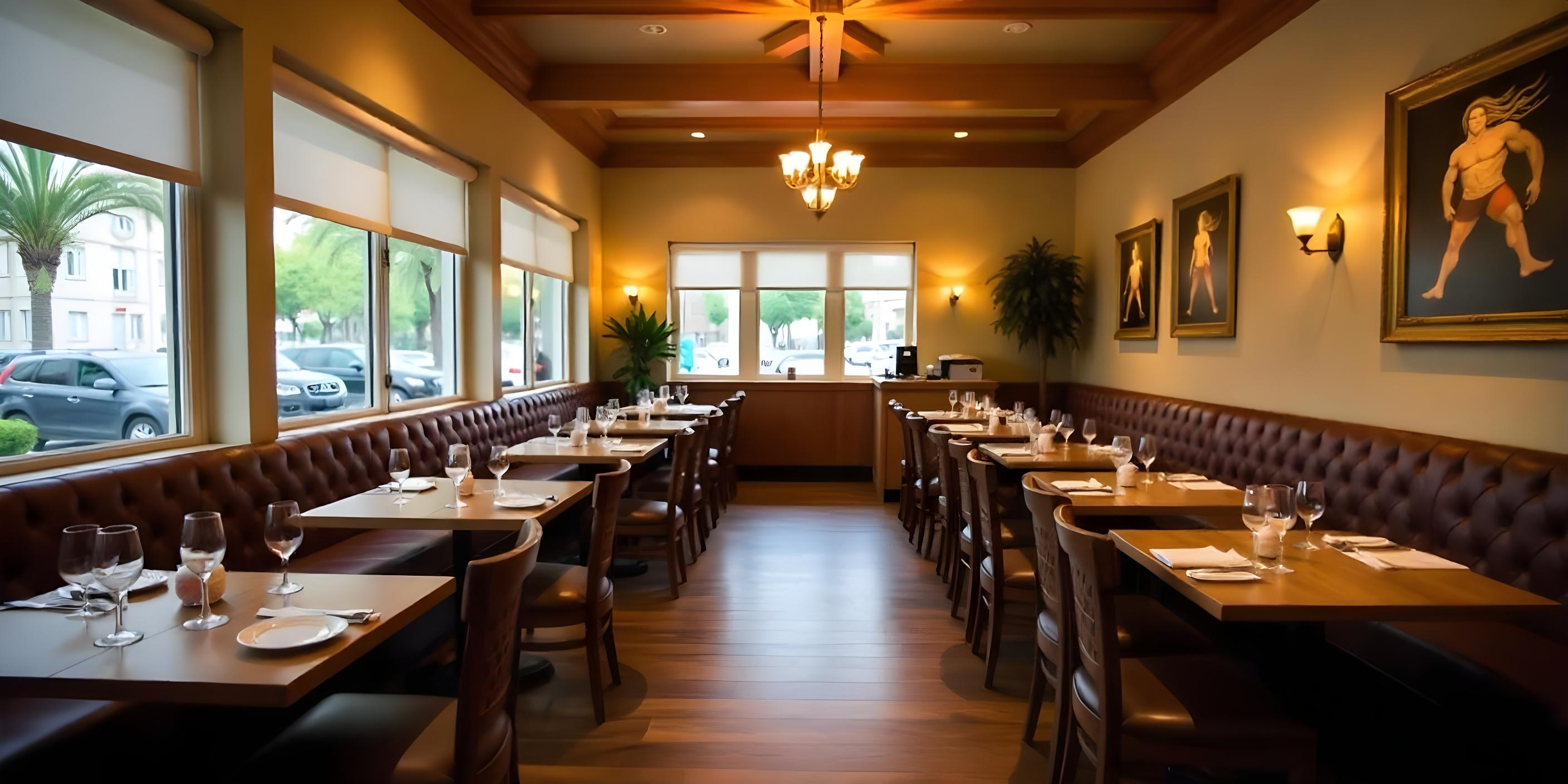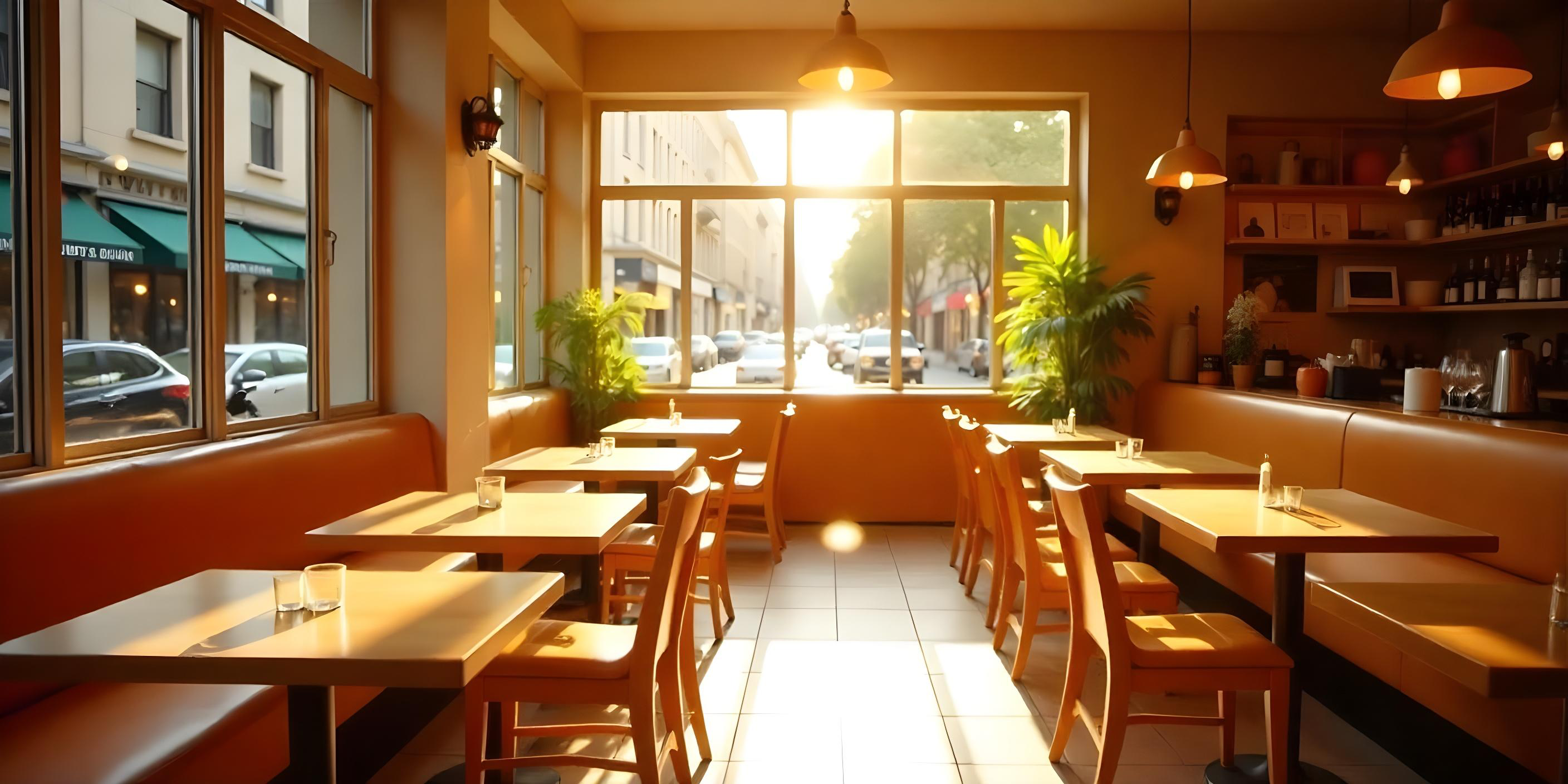Restaurant accessibility is important especially when it comes to creating an establishment that can cater to people of all needs. Here are some important areas of concern that restaurant and business owners need to be aware of.
Entrance and exterior accessibility is a fundamental part of restaurant interior inclusive design to guarantee that every guest, with or without mobility or disability, is able to access and relax comfortably within the establishment. A very important aspect is having a step-free entrance, where it can be created using ramps with gradual inclines or level entrances so wheelchair users and people who have mobility aids have unproblematic entry.
Entrances need to be outfitted with easy-open or automatic doors at least 36 inches (91 cm) wide so wheelchairs, walkers, and strollers can pass easily. Clear visual signs in high-contrast print large enough for readability, Braille, and tactile components aid visually impaired visitors to navigate independently throughout the premises. Patio or alfresco eating areas outside have even, skid-free flooring and wide pathways so it’s easy to manoeuvre.
Providing specific accessible parking close to the entrance with easy-to-find spaces creates a seamless arrival experience. Ramps outdoors need to be supplemented by sturdy handrails, and thresholds should be low to reduce the risk of tripping. Having adequate lighting at the entrance and along paths enhances visibility for persons who have low vision, and covered entrances provide an uncovered area for individuals who take longer to enter.
Offering these outdoor amenities to ADA or similar local standards not only increases accessibility but also inclusivity. By addressing these, restaurants can make their venue welcoming where each visitor regardless of physical ability — feels valued and attended to from the moment they enter.

Interior design and navigation are crucial in the design of an accessible restaurant space to cater to all, including the mobility impaired. A restaurant that is wheelchair accessible should offer a minimum of 36 inches (91 cm) of clear, wide floor space along paths for the simple movement of wheelchairs, walkers, and baby strollers. Seating can be flexible by offering varied table heights to cater to diverse needs.
Tables need to be a minimum of 27 inches (69 cm) away from the floor for the comfort of wheelchair users. Reducing congested arrangements supports easy circulation, allowing all visitors to navigate around the room independently and safely. Additionally, by providing designated wheelchair-accessible seating and ensuring these spaces are blended as opposed to distinct, there is a feeling of belonging fostered. Furniture needs to be stable and easy to move through, without sharp corners or low-level barriers that could be dangerous.
@smokedkingdom WHEELCHAIR FRIENDLY RESTAURANTS🤩 Terletak di tengah-tengah Bandar Shah Alam,iaitu Vista Alam dan juga berdekatan dengan Hospital Avisena. Ramai yang tak tahu Restoran Ustaz Don rupanya ada di Shah Alam! Haaa warga Shah Alam dan penduduk sekitar nya,nak makan western food boleh lah singgah ke Smoked Kingdom Vista Alam lepas ni. BOOK your seat now‼️ 📲Klik link di bio untuk tempahan smokedkingdom video restaurant fypkek makanlocal foodreview westernfood jjcm smokedkingdombydondaniyal familybonding schoolholiday cutisekolah familytimefun malaysianfood shahalam kualalumpurmalaysia klfoodies jjcm westernfood shahalamfooddelivery kidsfriendly mesrakanakkanak wheelchairfriendly
♬ original sound – Smoked Kingdom By Don Daniyal – Smoked Kingdom By Don Daniyal
Clear visual and tactile indication allows all customers, including visually impaired customers, to move around the restaurant easily. Having major touch points such as payment points and self-service zones available at an accessible height (28-34 inches or 71-86 cm) is also important. For restaurants on multiple levels, the installation of elevators or ramps ensures everyone can reach all levels.
Respectful design is also used for waiting areas, which also require accessible seating. By prioritising open, barrier-free circulation and adaptable floor plans, restaurants are able to create an environment where everyone is invited and accommodated, enhancing the dining experience for all customers, regardless of ability.
Service and hospitality play the vital roles in keeping restaurant access viable and cultivating an embracing atmosphere for everybody. Perhaps one of the greatest thoughts to be regarded is the provision of adaptive plates, cutlery, and other dining apparatus for patrons having dexterity impairment issues — accessible hold fork, plastic dishes, bendy straws.
Availability upon ordering such goods exemplifies high importance of providing each consumer comfortable hospitality. Also needed are open and obstruction-free pathways across tables and to service points such that people in wheelchairs or using mobility aid devices may travel easily in the area. Providing accessible seating near entrance ways or toilets also can boost people with disabilities’ dining pleasure.
Restaurant staffs also need training to provide friendly and courteous assistance to individuals with disabilities. This also includes understanding the ways of communicating with visitors who have speech, hearing, or intellect disabilities, in addition to having awareness on offering help in a non-intrusive way.
All the staff should be ready for reading menus aloud or guiding the blind people on request. Employee training on being sensitive increases staff confidence when addressing various demands based on consideration and professionalism and offers an accommodation-free welcome to everyone. Second, service animal accommodation by providing adequate space under tables and having a pet policy when needed is part of accessible hospitality.
Offering adaptable service, such as accommodating customers’ ordering style or help with self-service kiosks, also adds to accessibility. With the integration of these service-minded strategies, restaurants can create a more inclusive, comfortable, and respectful dining environment for everyone, with no one left out or disrespected.

Menus and communication are the most important elements in making restaurants accessible and friendly to all visitors. In order to accommodate diverse needs, having different menu forms is critical. These are Braille menus for customers with visual impairment, large-print menus for customers who have low vision, and electronic menus that can be accessed using screen readers.
QR codes also facilitate easy access to electronic versions, which allow customers to read menus on their own devices. Furthermore, using visual or picture menus assist cognitively impaired or language variant individuals so they can simply read and understand it and place an order for their meal. Careful choice of words and logically designed menu are also facilitating in reading accessibility by readers with impairments.
@ellymelliecafe Replying to @DLE Pengguna wheelchair atau sesiapa yang nak datang ke Elly Mellie Cafe tapi taknak naik tangga, boleh naik lift tauu 🤗 #cafe #cafepenang #fyp #muslimowned #halal #penang #foodtiktok #food #foodlover #softcookies
Effective communication does not end there. Staff should be trained in disability sensitivity to interact respectfully and tactfully with all customers, including those who may use assistive aids or alternative modes of communication. Providing options for written or visual communication can help customers who have hearing impairments or speech disorders. The provision of notepads, for example, allows guests to write down their order if needed. Furthermore, prioritising service flexibility, offering extra time to order or explicitly labelling menu items is a good means of establishing a welcoming and inclusive environment.
Prioritising accessible menus and respectful communication can make the environment more welcoming and accommodating for everyone. These considerate accommodations not only enhance the dining experience for disabled visitors but also demonstrate a focus on diversity, inclusion, and customer satisfaction.
Designing open restaurant interiors that appeal to everybody, including those with hearing difficulties, visual impairments, and sensory sensitivities, depends heavily on sensory factors. Essential is considerate lighting design; using adjustable, glare-free lighting helps to improve visibility for guests with poor vision while providing a relaxing setting for people who have been bothered with strong lights.
Including natural light where should help to make a room feel cosier and to lessen the strong artificial lighting effects. Equally necessary is acoustic control; loud surroundings can be very difficult for people with hearing problems or sensory sensitivity. Reducing background noise and reverberation by installing sound-absorbing elements like carpets, acoustical panels, and upholstery enhance the dining experience by making it more quiet and cool. Visually clear contrasts among floors, walls, and furnishings help guests with vision impairments to easily negotiate the space.
Furthermore, offering menus in friendly formats —large print, Braille, digital versions compatible with screens ensures that every guest can freely peruse dining possibilities. For people with sensory processing issues, quiet dining areas or rooms with muted lighting may help to create a more calming environment. Clear signs and visual cues help inclusive restaurants to effortlessly direct customers around the space.
Beyond physical layout, sensory-friendly service possibilities such permission to ask for personalised seating arrangements or lower music levels add more to the dining experience. Restaurants that give precedence to these sensory issues help to create an atmosphere where every patron feels accepted, relaxed, and appreciated hence building a more inclusive and pleasant dining environment for everyone.

Need help with interior design? I-dzine is your answer to it. We are experts in transforming space from virtual to reality. Our expertise in renovation design, oversight, and management ensures that your property is well-designed. We relentlessly focused on delivering meticulously created, beautiful, functional designs.